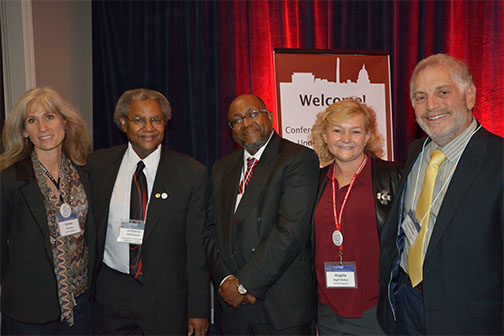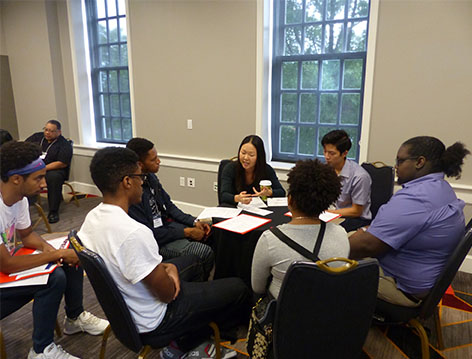Physics Professor Michelle Girvan Receives $3M NSF Grant to Train Graduate Students in Network Biology
- Details
- Published: Thursday, November 17 2016 16:03
As researchers in the life sciences cope with the data explosion resulting from the advent of powerful new technologies, they must learn to transform this raw data into useful information from which new biological insights can be inferred.
To address this challenge, the University of Maryland recently received a five-year, $3 million National Science Foundation Research Traineeship (NRT) grant to establish a new training and research program in network biology. Graduate students in the Computation and Mathematics for Biological Networks (COMBINE) program will learn to marry physics-style quantitative modeling with data processing, analysis and visualization methods from computer science to gain deeper insights into the principles governing living systems.
"More data does not mean better information without the interdisciplinary tools required to make the transformation," said COMBINE's principal investigator Michelle Girvan, an associate professor with a joint appointment in the Department of Physics and the Institute for Physical Science and Technology. In her own research, Girvan combines methods from statistical physics, nonlinear dynamics and computer science to develop network science tools that can address problems in computational biology and sociophysics.
The COMBINE program anticipates training approximately 60 Ph.D. students, including 35 who will be supported by 12-month fellowships. Participants will receive training in four areas of network analysis: quantitative metrics for biological networks; mechanistic models of biological networks; network statistics and machine learning for biological applications; and visualization techniques for large, complex biological data sets. This training will provide the foundation for research in at least one of the following areas: biomolecular, neuronal and/or ecological/behavioral networks.
Research experiences, interdisciplinary coursework, peer-to- peer tutorials and internships with partners—including the Smithsonian Institution, the National Institutes of Health, the University of Maryland School of Medicine and industry partners—will provide the graduate students with the skills needed to communicate complex scientific ideas to diverse audiences to maximize impact. Outreach activities will extend the benefits of the program to undergraduates, middle and high school students, and to the public at large. COMBINE brings together a unique, multidisciplinary team of researchers. Co-principal investigators of the program are Associate Professor Daniel Butts and Professor Bill Fagan of the Department of Biology, and Associate Professor Hector Corrada Bravo and Professor Amitabh Varshney of the Department of Computer Science and the University of Maryland Institute for Advanced Computer Studies. Varshney also serves as interim vice president for research and chief research officer at UMD. The highly competitive NRT program fosters development and implementation of bold, new, potentially transformative models for graduate education in science, technology, engineering and mathematics (STEM) fields. Fewer than 10 percent of proposals submitted to the program are funded.
"Innovative and interdisciplinary approaches will be key to tackling tomorrow's scientific challenges, and today's STEM graduate students will need to develop the skills to meet those challenges," said Joan Ferrini-Mundy, NSF assistant director for education and human resources. The NSF Research Traineeship program is testing new models to train graduate students across STEM disciplines and to prepare them for contributions in diverse careers."
Media Relations Contact: Abby Robinson, 301-405- 5845, This email address is being protected from spambots. You need JavaScript enabled to view it.
Writer: Barbara Brawn-Cinani
University of Maryland
College of Computer, Mathematical, and Natural Sciences
2300 Symons Hall,
College Park, MD 20742
About the College of Computer, Mathematical, and Natural Sciences
The College of Computer, Mathematical, and Natural Sciences at the University of Maryland educates more than 7,000 future scientific leaders in its undergraduate and graduate programs each year. The college's 10 departments and more than a dozen interdisciplinary research centers foster scientific discovery with annual sponsored research funding exceeding $150 million.


